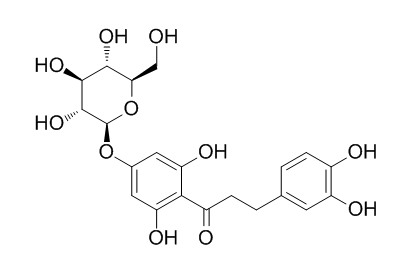Sieboldin
Reference standards.
Inquire / Order:
manager@chemfaces.com
Technical Inquiries:
service@chemfaces.com
Tel:
+86-27-84237783
Fax:
+86-27-84254680
Address:
1 Building, No. 83, CheCheng Rd., Wuhan Economic and Technological Development Zone, Wuhan, Hubei 430056, PRC
Providing storage is as stated on the product vial and the vial is kept tightly sealed, the product can be stored for up to
24 months(2-8C).
Wherever possible, you should prepare and use solutions on the same day. However, if you need to make up stock solutions in advance, we recommend that you store the solution as aliquots in tightly sealed vials at -20C. Generally, these will be useable for up to two weeks. Before use, and prior to opening the vial we recommend that you allow your product to equilibrate to room temperature for at least 1 hour.
Need more advice on solubility, usage and handling? Please email to: service@chemfaces.com
The packaging of the product may have turned upside down during transportation, resulting in the natural compounds adhering to the neck or cap of the vial. take the vial out of its packaging and gently shake to let the compounds fall to the bottom of the vial. for liquid products, centrifuge at 200-500 RPM to gather the liquid at the bottom of the vial. try to avoid loss or contamination during handling.
Plant Physiol Biochem.2023, 201:107795.
Horticulturae2020, 6(4),76.
Pharm Biol.2022, 60(1):2040-2048.
Front Plant Sci.2021, 12:673337.
Curr Res Virol Sci.2022, 3:100019.
Journal of Oil Palm Research2019, 31(2):238-247
Fitoterapia.2024, 175:105958.
Biomedicines.2020, 8(11):486.
Evid Based Complement Alternat Med.2022, 2022:3483511
Plants (Basel).2021, 10(12):2795.
Related and Featured Products
Tree Genetics & Genomes, 2018, 14(6).
Linkage and association analysis of dihydrochalcones phloridzin, sieboldin, and trilobatin in Malus。[Reference:
WebLink]
Dihydrochalcones (DHCs) are a distinctive characteristic of Malus species, with phloridzin as the major DHC in most Malus species, including cultivated apple. DHCs in apple have unique chemical properties with commercial and nutritional value and may yield important insights into the evolution and physiology of apple. A few species produce Sieboldin and trilobatin instead of phloridzin, and interspecific hybridization produce offspring with combinations of phloridzin, Sieboldin, and trilobatin.
METHODS AND RESULTS:
Using Malus prunifolia PI 89816 as a common male parent, five F1 populations were developed to understand the genetic basis of these DHCs in Malus. We measured DHC content in each population and observed segregation into five distinct DHC profiles, which fit a model for three independently segregating loci. QTL associated with DHC content were identified on linkage groups 7 and 8 of the Malus genome using linkage analysis with a cross of NY-152 by M. prunifolia PI 589816 and association mapping with a Malus germplasm collection. In addition to DHC segregation, we observed variation in the relative proportions of phloridzin, Sieboldin, and trilobatin.
CONCLUSIONS:
The QTL identified represent a critical step in understanding the genetic controllers of DHC content in Malus.



